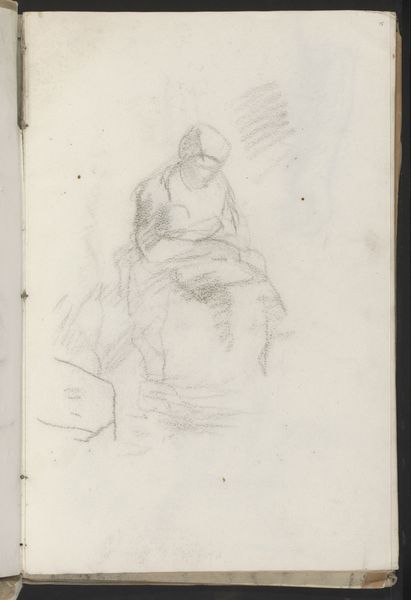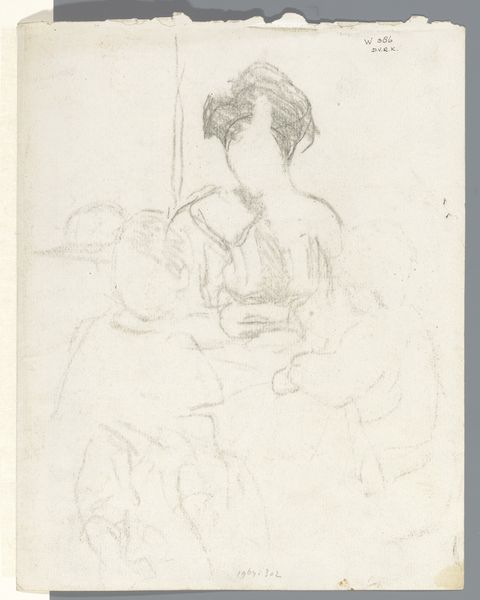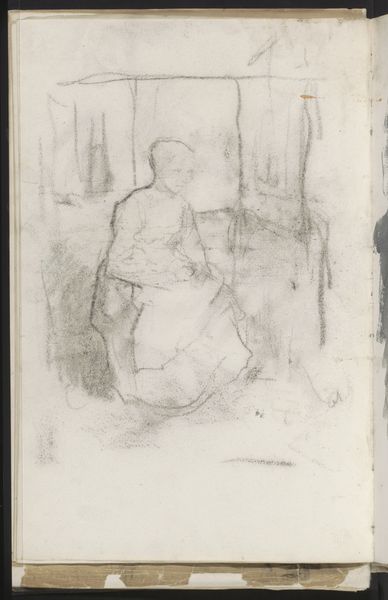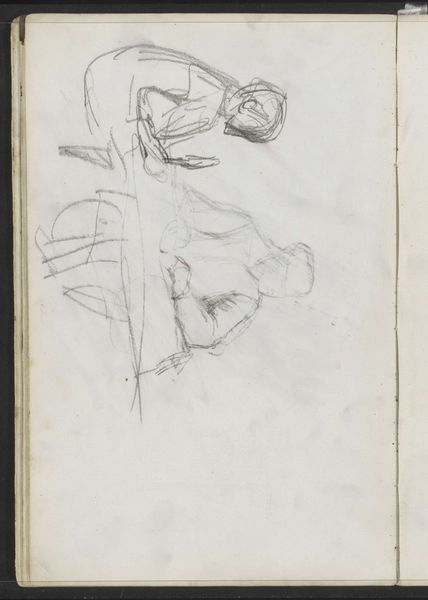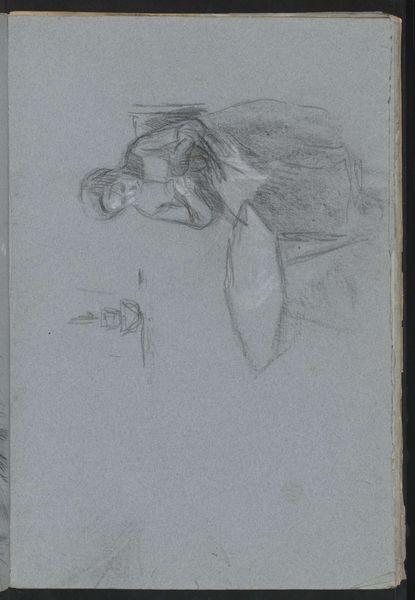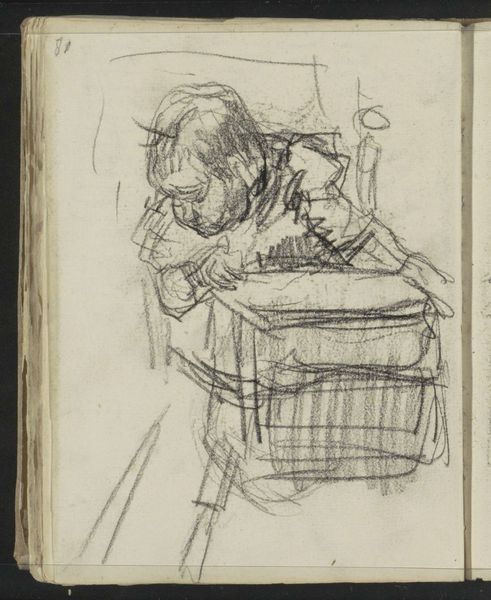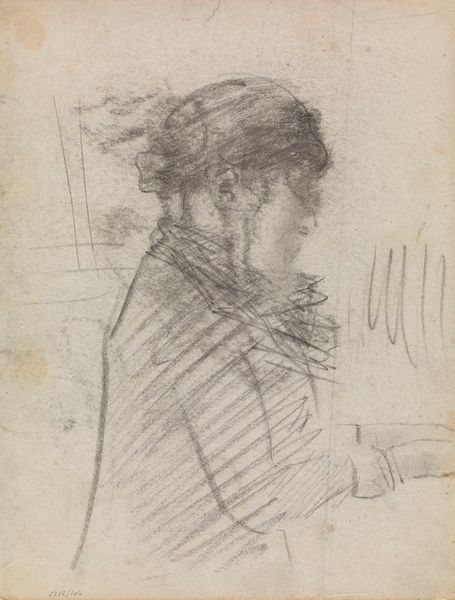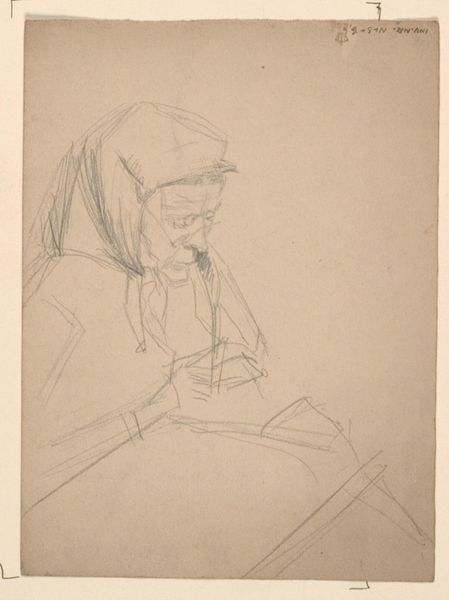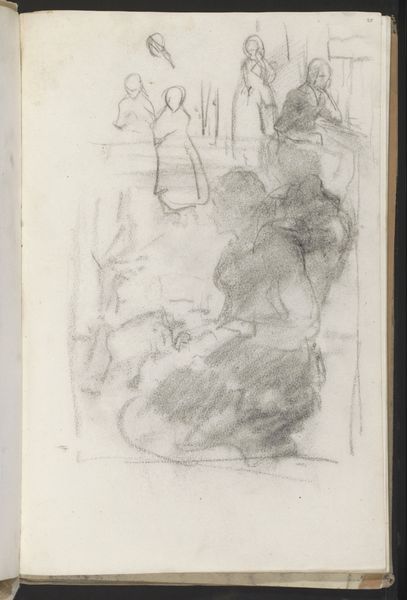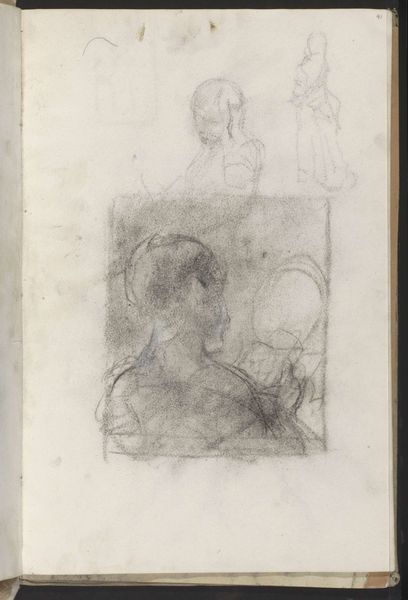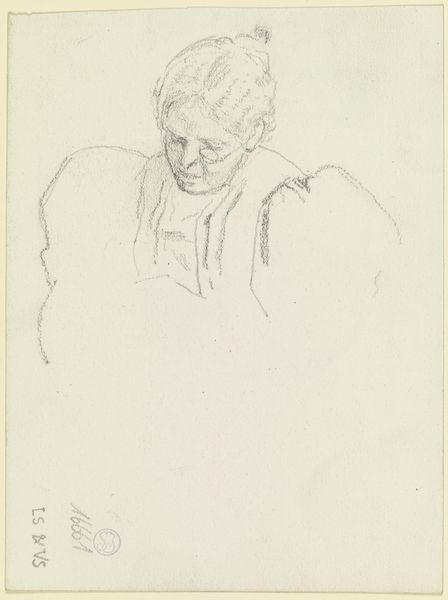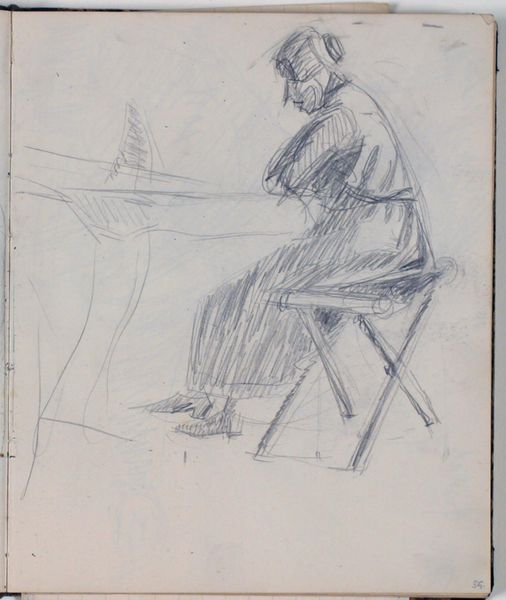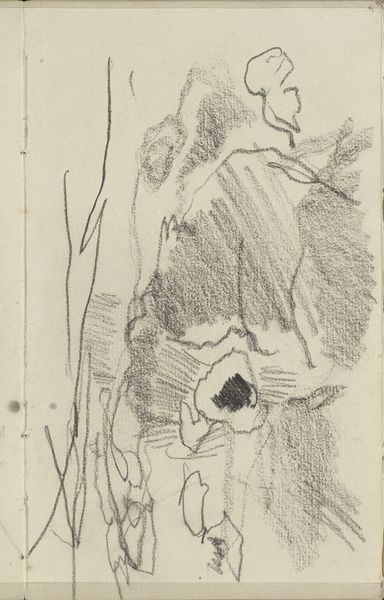
drawing, paper, pencil
#
portrait
#
drawing
#
pencil sketch
#
figuration
#
paper
#
pencil
Copyright: Rijks Museum: Open Domain
Curator: There's a fragility to this piece that's immediately striking. It feels fleeting, almost as if the figure could disappear with a breath. Editor: This is "Abklatsch van de krijttekening op blad 22 verso," a pencil and chalk drawing on paper attributed to Isaac Israels and estimated to have been created between 1875 and 1934. The title refers to a chalk drawing. The 'abklatsch' indicates the reproduction or print of the original chalk work found on page 22 of the artist's sketchpad. The original work is preserved at the Rijksmuseum. It presents a figure study. Curator: Figure study, exactly! You can really see the artist working through the form, experimenting with pressure and shading. I wonder, was this intended as a preparatory sketch for a larger work, or a study in its own right? The quality of the paper, the particular pencils or chalk used – those details would tell us so much about Israels' process here. The support shows the materiality of its original intention as one of the leaves within the book form. Editor: The question of intention is interesting, especially within the context of the burgeoning art market in the late 19th and early 20th centuries. Were these "sketches" truly just exercises, or were they also produced with an eye toward sale and display? Did the growing number of galleries showing works on paper create a new incentive for artists like Israels? How were these works valued relative to paintings? Curator: Those are key considerations, and I'm sure Israels would have considered all those as material circumstances and incentives when realizing these portraits. But look closer – the pressure of the pencil, the types of line used in rendering volume—there's so much information embedded in these deliberate material actions that we can decode. Did he perhaps create an assembly line with different materials to complete various pieces that might include this portrait? Editor: That's a useful hypothesis, since the figure's downcast gaze seems to invite contemplation, while the loose strokes capture a modern sensibility. The work resides in the national collection. This acquisition history contributes to its current aura of artistic merit, doesn't it? And it raises questions about collecting practices at the time. Curator: Definitely. Analyzing this work in isolation would limit our understanding. Seeing how it circulates and is received – those things reveal so much about the art world. Still, there's something about that subtle graphite, its texture, that holds me. Editor: Absolutely. Every aspect plays its role in its creation, display, and valuation, a history we see reflected even in its seemingly simple lines. Thanks for bringing the historical aspects into this discussion. Curator: And thank you for reminding me to look past the artifice to the raw matter that constitutes its production.
Comments
No comments
Be the first to comment and join the conversation on the ultimate creative platform.
